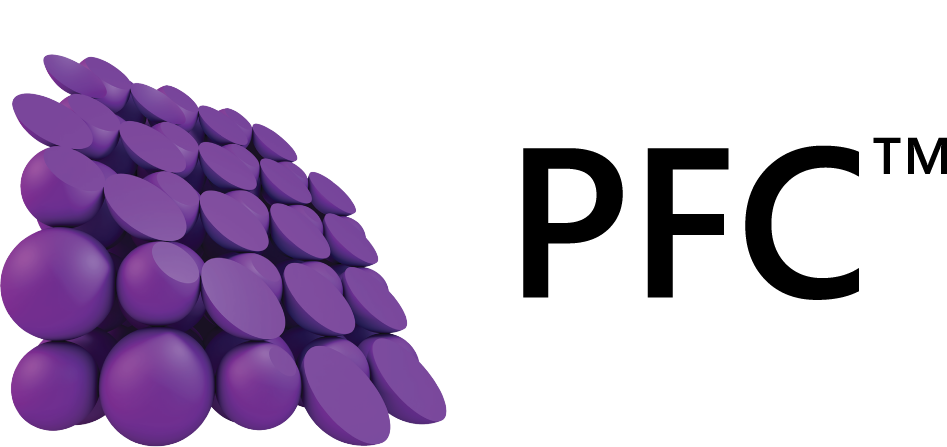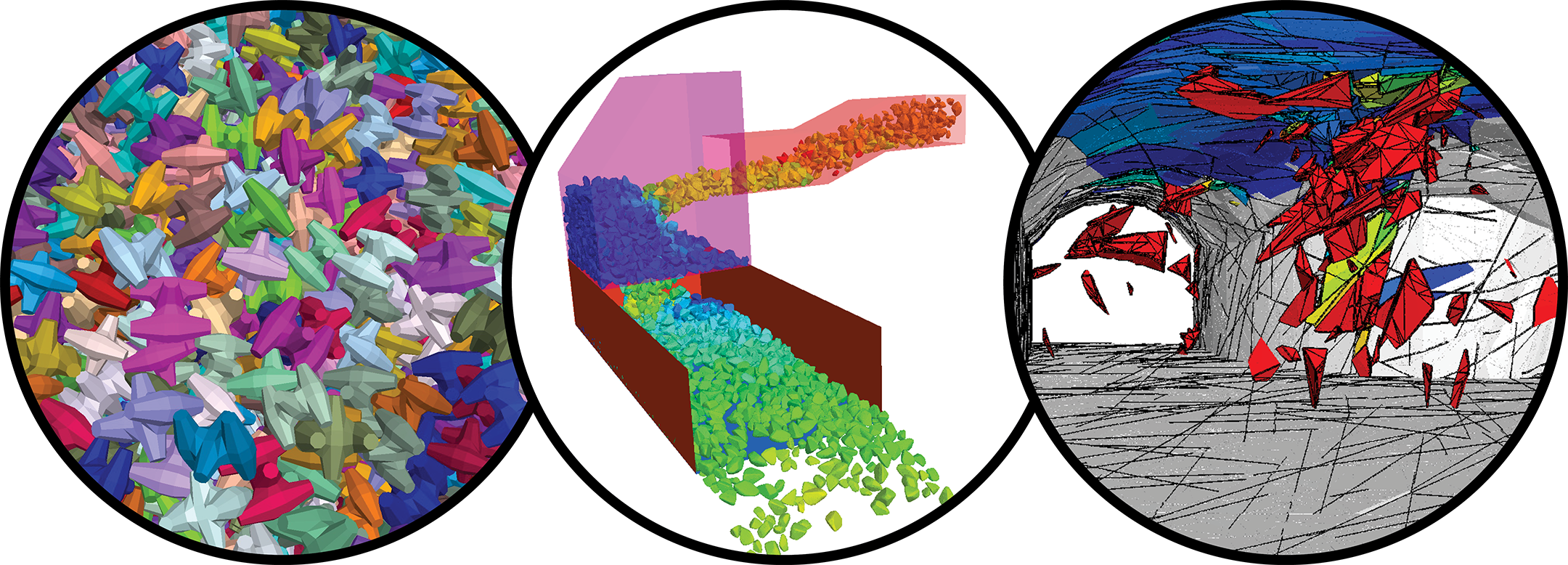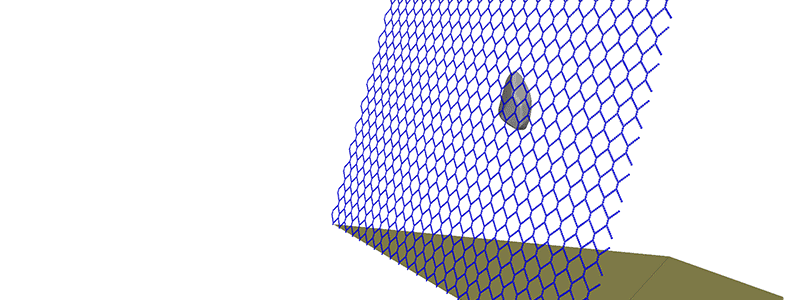

Description
PFC (Particle Flow Code) is a general purpose, distinct-element modeling (DEM) framework that is available as two- and three-dimensional programs (PFC2D and PFC3D, respectively). PFC Suite includes both PFC2D and PFC3D. PFC2D can also be purchased separately.
PFC models synthetic materials composed of an assembly of variably-sized rigid particles that interact at contacts to represent both granular and solid materials. PFC models simulate the independent movement (translation and rotation) and interaction of many rigid particles that may interact at contacts based on an internal force and moment. Particle shapes can include disks in 2D, or spheres in 3D, rigidly connected “clumps” of disks in 2D, or spheres in 3D, and convex polygons in 2D or polyhedra in 3D. Contact mechanics obey particle-interaction laws that update internal forces and moments. PFC includes sixteen built-in contact models with the facility to add custom C++ User-Defined Contact Models (UDMs).
Perpetual, monthly lease, and annual lease licenses are available, secured with either a local USB key (which is portable), a web license, or a network USB key. Qualified academic institutions qualify for special pricing discounts.

Applications
Thanks to its general design, PFC can be customized and applied to a very broad range of numerical investigations where the discrete nature of the systems is of interest. Since the release of the first version in 1994, PFC has become a leading DEM tool for geoscience investigations ranging from fundamental research on soil and rock behavior at the micro scale to a wide variety of large scale applications, including: hydraulic fracturing, soil-tool interactions, brittle rock fracturing, slope and excavation stability, rock cutting, pavement design, material handling, bulk material flow/mixing, and cave mining.
PFC has also been used to simulated a wide range of other advanced applications in the fields of carbon nanotubes, molecular dynamics, magnetic materials, and medicine.
Integrated Analysis Tools
The following analysis modules are included with PFC.
Thermal Analysis: The thermal module of PFC allows simulation of transient heat conduction and storage in materials consisting of PFC particles, as well as development of thermally induced strains and forces. PFC supports both thermal-only and coupled thermal-mechanical analysis.
C++ Contact Models: Enables users to add new contact models (force-displacement response between particles) in PFC using C++ scripting. This component provides the flexibility to incorporate new physics applicable to your simulations into the distinct-element framework.

